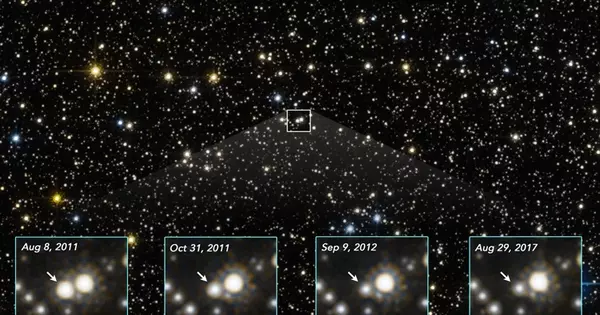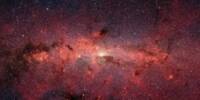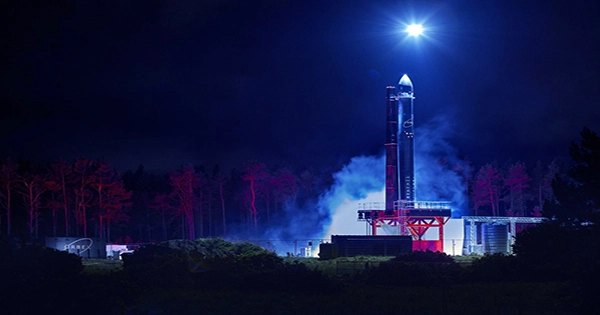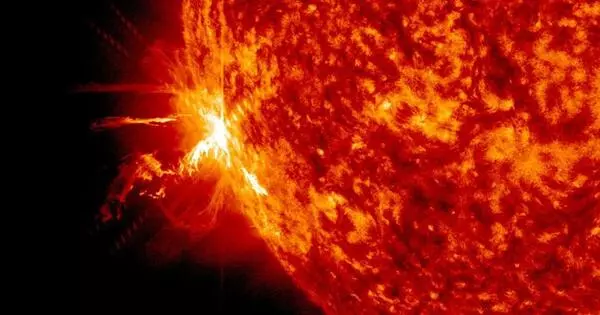Astronomers discovered a free-floating black hole by observing the brightening of a more distant star as its light was distorted by the object’s strong gravitational field – a process known as gravitational microlensing.
By definition, black holes are invisible unless they are part of a stellar binary or surrounded by an accretion disk. Most stellar-sized black holes aren’t, but astronomers have been looking for them through gravitational microlensing events, in which the black hole brightens and distorts light from stars as it moves toward the galactic center. A team led by UC Berkeley may have discovered the first free-floating black hole, though more data is needed to rule out a neutron star.
If, as astronomers believe, large star deaths leave behind black holes, there should be hundreds of millions of them scattered across the Milky Way galaxy. The issue is that isolated black holes are invisible. Now, astronomers led by the University of California, Berkeley, have discovered what appears to be a free-floating black hole for the first time by observing the brightening of a more distant star as its light was distorted by the object’s strong gravitational field – a process known as gravitational microlensing.
The team, led by graduate student Casey Lam and Jessica Lu, an associate professor of astronomy at UC Berkeley, estimates that the invisible compact object’s mass ranges between 1.6 and 4.4 times that of the sun. Because astronomers believe a dead star’s remnant must be heavier than 2.2 solar masses in order to collapse to a black hole, the UC Berkeley researchers warn that the object could be a neutron star rather than a black hole. Neutron stars are also dense, highly compact objects, but their gravity is balanced by internal neutron pressure, preventing them from collapsing further into a black hole.
Whether a black hole or a neutron star, the object is the first dark stellar remnant — a stellar “ghost” — discovered wandering through the galaxy unpaired with another star.
“This is the first free-floating black hole or neutron star discovered with gravitational microlensing,” Lu said. “With microlensing, we’re able to probe these lonely, compact objects and weigh them. I think we have opened a new window onto these dark objects, which can’t be seen any other way.”
Determining how many of these compact objects populate the Milky Way galaxy will help astronomers understand the evolution of stars, particularly how they die, and of our galaxy, as well as whether any of the unseen black holes are primordial black holes, which some cosmologists believe were produced in large quantities during the Big Bang.
Lam, Lu, and their international team’s study has been accepted for publication in The Astrophysical Journal Letters. The analysis includes four other microlensing events that the team concluded were not caused by a black hole, though two were most likely caused by a white dwarf or a neutron star. The team also concluded that the likely population of black holes in the galaxy is 200 million — about what most theorists predicted.
This is the first free-floating black hole or neutron star discovered with gravitational microlensing. With microlensing, we’re able to probe these lonely, compact objects and weigh them. I think we have opened a new window onto these dark objects, which can’t be seen any other way.
Jessica Lu
Same data, different conclusions
Notably, a competing team from the Space Telescope Science Institute (STScI) in Baltimore analyzed the same microlensing event and claims that the mass of the compact object is closer to 7.1 solar masses and indisputably a black hole. A paper describing the analysis by the STScI team, led by Kailash Sahu, has been accepted for publication in The Astrophysical Journal.
Both teams used the same data: photometric measurements of the distant star’s brightening as its light was distorted or “lensed” by the super-compact object, and astrometric measurements of the shifting of the distant star’s location in the sky as a result of the gravitational distortion caused by the lensing object. The photometric data came from two microlensing surveys: the Optical Gravitational Lensing Experiment (OGLE), which uses a 1.3-meter telescope in Chile operated by Warsaw University, and the Microlensing Observations in Astrophysics (MOA), which is mounted on a 1.8-meter telescope in New Zealand operated by Osaka University. The astrometric data came from NASA’s Hubble Space Telescope. STScI manages the telescope’s science program and oversees science operations.
Because the same object was captured by both microlensing surveys, it has two names: MOA-2011-BLG-191 and OGLE-2011-BLG-0462, or OB110462. While surveys like these find about 2,000 stars in the Milky Way galaxy that have been brightened by microlensing each year, the addition of astrometric data allowed the two teams to determine the mass of the compact object and its distance from Earth. The UC Berkeley-led team calculated that it is located between 2,280 and 6,260 light-years (700-1920 parsecs) away, in the direction of the Milky Way Galaxy’s center and near the large bulge that surrounds the galaxy’s central massive black hole.
The STScI group estimated that it lies about 5,153 light-years (1,580 parsecs) away.

Looking for a needle in a haystack
Lu and Lam became interested in the object in 2020, after the STScI team tentatively concluded that five Hubble microlensing events – all of which lasted more than 100 days and thus could have been black holes – were not, after all, caused by compact objects.
Lu, who has been searching for free-floating black holes since 2008, hoped the data would help her estimate their abundance in the galaxy, which has been estimated to be between 10 million and 1 billion. Star-sized black holes have so far only been discovered as part of binary star systems. Black holes in binaries are seen either in X-rays, produced when material from the star falls onto the black hole, or by recent gravitational wave detectors, which are sensitive to mergers of two or more black holes. But these events are rare.
“Casey and I saw the data and we got really interested. We said, ‘Wow, no black holes. That’s amazing,’ even though there should have been,” Lu said. “And so, we started looking at the data. If there were really no black holes in the data, then this wouldn’t match our model for how many black holes there should be in the Milky Way. Something would have to change in our understanding of black holes — either their number or how fast they move or their masses.”
When Lam examined the photometry and astrometry for the five microlensing events, she was surprised to discover that one of them, OB110462, exhibited the characteristics of a compact object: The lensing object appeared dark, and thus not a star; the stellar brightening lasted nearly 300 days, and the distortion of the position of the background star was also long-lasting.
The length of the filming event was the main red flag, according to Lam. In 2020, she demonstrated that looking for very long events was the best way to find black hole microlenses. She claims that only 1% of detectable microlensing events are likely to be from black holes, so looking at all events would be like looking for a needle in a haystack. But, Lam calculated, about 40% of microlensing events that last more than 120 days are likely to be black holes.
“How long the brightening event lasts is a hint of how massive the foreground lens bending the light of the background star is,” Lam explained. “Long events are more likely as a result of black holes. It’s not a guarantee, though, because the duration of the brightening episode is determined not only by the size of the foreground lens, but also by how fast the foreground lens and background star move relative to each other. We can confirm whether the foreground lens is a black hole by also measuring the apparent position of the background star.”
According to Lu, the gravitational influence of OB110462 on the light of the background star lasted an astonishingly long time. It took about one year for the star to brighten to its peak in 2011, then about a year to dim back to normal.
















